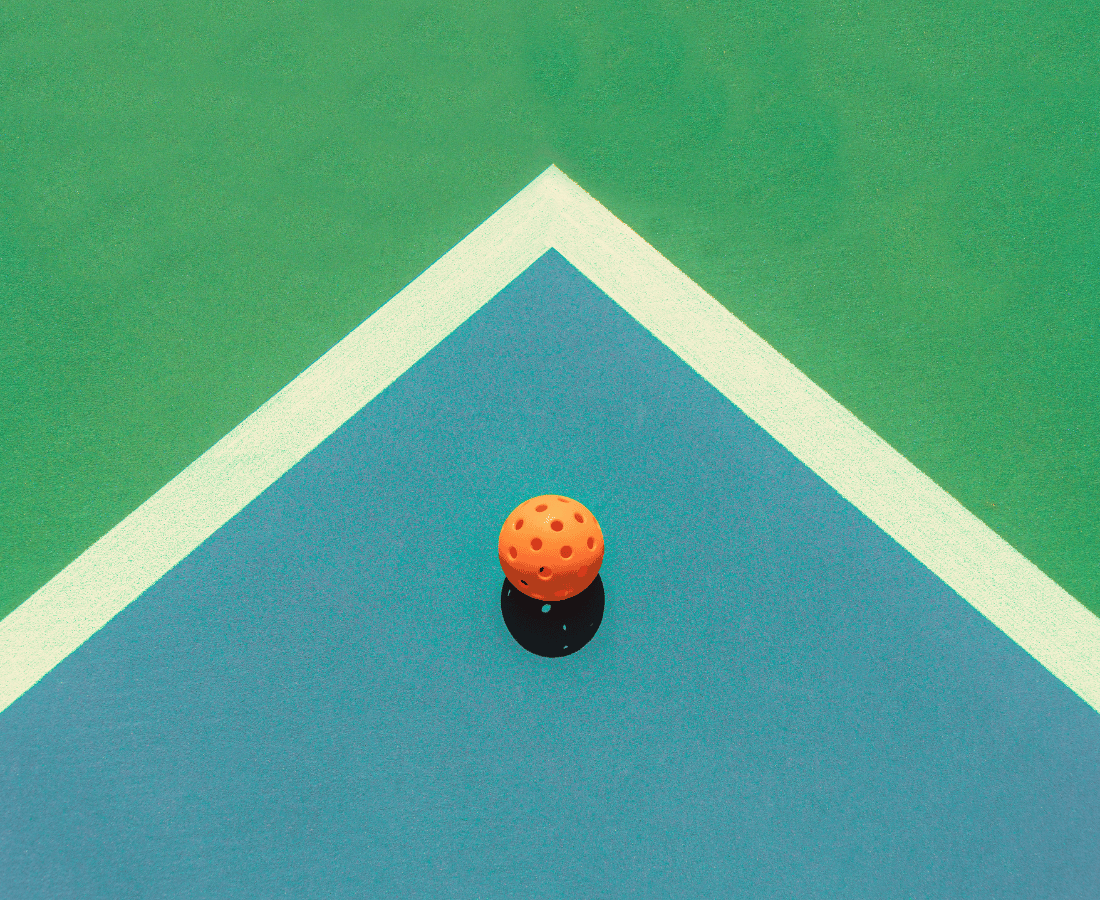It happens to everyone. Your opponent serves the ball in your direction, landing it right near
the centerline. It looked “in” to you. It looked “out” to your partner. You look at each other. Who makes the call?
Line calls in pickleball can be tricky. You want to get it right, but in the heat of the match, it can be hard to see every shot clearly.
That’s why it’s important to know the rules for line calls, as well as the game’s code of ethics. We’ve put together this crash course to help you understand the rules and confidently call the lines during your next match.
Line Call Rules for Pickleball
In order to successfully call lines during a pickleball game, it’s important to know the basic components of the court and the rules laid out in the Pickleball Official Rulebook.
The Lines of the Court
The non-volley zone at the front of the court is marked by non-volley zone lines. The line down the center of the court that separates the right service area from the left service area is called the centerline. The line you stand behind to serve is called the baseline. The lines along each side of the court are called the sidelines.
How to Tell If A Serve Is In
When the ball is served, it must land outside of the non-volley zone and its corresponding lines. It must land in the service area diagonally across from the server. If the ball lands on the baseline, centerline or sideline of the service court, it is considered in. If the ball lands on any of the non-volley zone lines or in the non-volley zone, it is out.
How to Tell If Ball Is Out
After your opponent successfully lands their serve, the rally is on! Each ball hit during the rally must land within the court. If the ball touches a court line, it should still be called in. In order to call a ball out, a player should see space between the line and the ball when it hits the ground. To borrow an old tennis adage, a ball that is 99% out is still 100% good.
Who Can Call the Ball “Out” In Pickleball?
In most matches, you will not have a line judge or referee. Instead, you will make line calls on your side of the court, while your opponent will make line calls on their side of the court. When a ball lands on your side of the court, you or your partner can call the ball out.
The Pickleball Code of Ethics
If you and your opponents are calling lines during your match, it is important to follow the code of ethics to ensure an enjoyable, fair match. Here’s an overview of the code of ethics:
Focus On Your Side of the Court
Players should call balls in or out on their side of the court, not the opponents. It is each player’s responsibility to be as accurate as possible when calling lines.
Give Your Opponent the Benefit of the Doubt
Sometimes, a ball will land right near the court lines, making it impossible to truly tell if it landed out or caught the line. If you can’t confidently say the ball was out, it is considered in.
You can also ask your opponent for their input. However, if they could clearly see whether the ball landed in or out, you must accept their call.
Spectators Are Not Part of Line Call Decisions
Spectators – meaning anyone besides the players on the court or, if present, a designated referee and line judges – cannot provide input on line calls.
Accept Your Opponent’s Calls
No one is 100% perfect – not even your opponent. You will occasionally wonder if a line call was accurate. Do not argue with your opponent. Accept the call and focus on the next point.
Make Calls Promptly
When a ball is out, let your opponent know through a verbal and hand signal. Simply saying “out!” will suffice as a verbal signal. When the ball is long, point your finger in the air. If the ball is wide, point your finger to the side.
Make the call in a timely manner. Typically, you must make an out call before the ball is hit by your opponent or is considered dead.
Understand How to Communicate With Your Partner
Have you ever let a partner know a ball might be going out before it landed? It’s not uncommon for pickleball partners to yell “bounce it” or “out” before the ball hits the ground. This approach helps you avoid hitting the ball unnecessarily. However, it does not count as a line call. You must wait until the ball lands to officially make a line call.
In some cases, you might realize that a ball was called out when it was actually in. In this case, you can overrule the previous call as long as it is to your disadvantage.
It’s Time to Hit the Courts!
The rules for line calls in a pickleball match aren’t necessarily lengthy – they take up just three pages in the official rule book – but they are nuanced. By knowing the rules and understanding the code of ethics, you’ll be able to call your next match in an assertive way.



